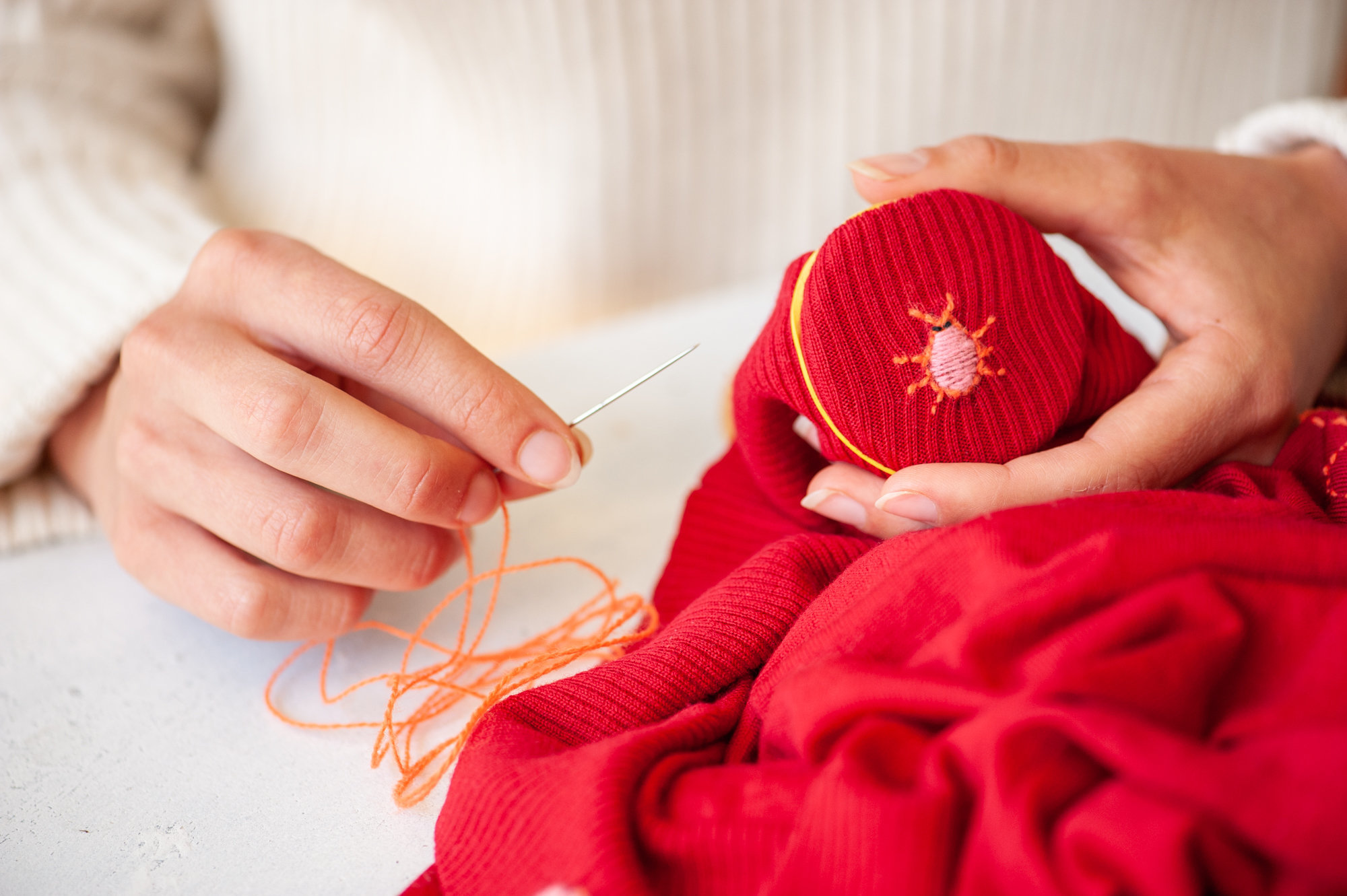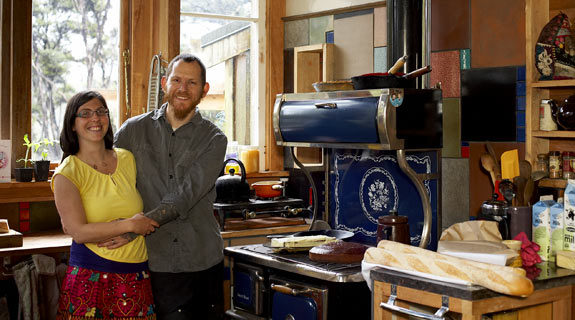The world’s honeybees are vanishing and New Zealand teeters on the brink of a catastrophic collapse in our bee population. Sarah Heeringa investigates the strange phenomenon of colony collapse disorder
The world’s honeybees are vanishing. Hives across the globe are empty, their bees gone without trace, wiped out in massive numbers by a strange phenomenon in just five years. No one knows what or who is to blame, but one thing’s clear: if the bees are toast, so are most of our favourite foods. Sarah Heeringa investigates the amazing and mysterious world of the honeybee
PHOTOS:
Megan Cumberpatch
It was an early summer’s morning, the relentless Spanish sun yet to reach its blistering best. David Cramp strolled towards his hives, the white cotton of his beekeeper suit rustling as he walked, his face covered by a mesh veil. David was in a relaxed mood. His young daughters had coped well with the move from England and his family were enjoying their new Spanish life. And his bees were doing well; 200 colonies and many millions of bees were producing delicious organic honey. As he approached his hives to give them their weekly check, he didn’t notice the silence.
But something had gone terribly, mysteriously wrong. The roar of millions of bees had diminished to a hum. Many of the hives had no worker bees. They had vanished—leaving behind neat and tidy wax, plenty of uneaten honey and pollen, and a young brood that soon died. “One week I had healthy colonies, a week or so later they were eerily empty,” he says. “I just couldn’t work out what had gone wrong.”
An apiarist of some experience, Cramp was completely baffled. Before moving to Spain he’d been a commercial beekeeper in England. He knew that bees rarely abandon a brood and food stores, but the sudden disappearance of his bees that day in 2004 left him wondering if it was something to do with his organic methods.

Now living in New Zealand, Cramp edits the online beekeeping magazine Apis UK, has authored A Practical Manual of Beekeeping and keeps a small number of hives in the Papamoa Hills, above Tauranga. It was not until a year after emigrating to New Zealand that Cramp came across accounts of a peculiar new disorder that was decimating Spanish hives and realised he was possibly one of its first victims—or at least one of the first to admit it.
Colony collapse disorder, or CCD, is the name given to the disturbing phenomenon that emerged in the bee world in 2004, and that has since caused the death or desertion of hives by billions of honeybees and feral bees around the world. The numbers are astounding: five million honeybees were reported to have disappeared from hives in Croatia in just 48 hours; in Taiwan, ten million bees vanished within a fortnight. The devastation shows no sign of stopping. Last winter in the UK, one-fifth of Britain’s remaining honeybee colonies perished.
The situation in America is just as alarming. CCD was discovered at the end of 2006 when thousands of commercial hives were found almost empty. A subsequent 15-state study by the Apiary Inspectors of America confirmed that almost onethird of honeybee colonies had collapsed. The following year, another 36 percent of America’s remaining bees died, then a further 29 percent in the year ending April 2009. Recent reports put the total number of lost US honeybee colonies at nearly two million.
The perfect storm
Despite extensive international research a definitive cause for CCD has yet to be identified—not that there’s a shortage of potential villains. Viruses, parasites (including the nasty varroa mite) and climate change are all suspects. So are modern commercial beekeeping practices and aspects of industrialised farming: the heavy use of pesticides, genetically modified plants and the increasing dominance of monoculture crops.
Is it a coincidence that America, with its super-sized, industrial agricultural model, is also one of the countries hit hardest by CCD? Alison Benjamin and Brian McCallum, authors of A World Without Bees, think not. They point to examples like California’s vast Central Valley, the place where 80 percent of the world’s almonds are now grown. Imagine a 650-square-kilometre area planted solely in almond trees—no other plants, wildflowers or weeds—just 60 million almond trees, in row after regimented row.
Agriculture on this scale has all sorts of implications. For one thing, the absence of any other plants and the systematic use of synthetic herbicides, insecticides and nitrogen fertilisers mean it’s a hostile place for any wasps, butterflies and other wild insects. And because pollination of the almond trees cannot occur naturally, every year a huge number of bees have to be physically brought in to do the job. That’s about 40 billion bees, trucked in from every corner of the country. Since CCD has devastated bee numbers, they’re also air freighted from as far away as Australia. Once this huge task of pollination has been done, the surviving bees are packed back onto trucks for the long drive to the next job.
Not only are America’s poor migrant bees overworked and transported en masse for thousands of kilometres each year, they’re also routinely fed a diet of high-fructose corn syrup and soy protein—the bee equivalent of living on McDonald’s … Add it all together, and is it any wonder so many US bees are going doolally?
It’s far from the quaint image of beehives clustered in a quiet orchard corner. Not only are America’s poor migrant bees overworked and transported en masse for thousands of kilometres each year, they’re also routinely fed a diet of high-fructose corn syrup and soy protein—the bee equivalent of living on McDonald’s. It’s well known that stress compromises a bee’s immune system and can disrupt a colony’s social structure, making it more susceptible to disease. Just as the huge Mexican piggeries are thought to have enabled swine flu to effectively spread and mutate, gathering millions of burned-out worker bees in one place seems to be just the thing for spreading any new disease. Add it all together, and is it any wonder so many US bees are going doolally?
But, like any good whodunit, as soon as you make a few enquiries things get more complicated. For one thing, CCD has occurred in other, quite different circumstances. In the UK, for instance, most bees are kept by hobbyist beekeepers, typically with only two or three hives. And how to explain the devastation of carefully managed organic colonies such as Cramp’s? Nor are mass bee disappearances an entirely new problem, say Benjamin and McCallum. The records show that nearly every decade since 1869 has brought some kind of mysterious, large-scale bee die-off. One epidemic in the early 1900s wiped out 90 percent of honeybee colonies on the UK’s Isle of Wight.
Not that this is any cause for complacency. The world is losing its honeybees at an alarming rate and the current episode is the most costly of all. It also seems to be the deadliest.
Bees have been trucked all over America for the past 40 years, but things have gone pear-shaped in just the last four. So what’s changed? Many blame the powerful new neonicotinoid pesticides. Applied to seeds rather than sprayed onto growing plants, these chemicals enter the plants and have devastating effects on any insects that consume them. The new pesticide Imidacloprid, marketed under the trade name Gaucho and made by the same company that invented Aspirin, is said to impair bee memory and interfere with their sophisticated communication and orientation skills. A sudden drop in bee populations followed its introduction in 1994 to the sunflower fields of central France. The effect on the ground was catastrophic. Many bees simply disappeared, others fell down paralysed, appeared agitated or took long rests on flower heads, constantly cleaning their antennae and scratching at their bodies. Many of those that made it back to the hive were refused entry by the bouncer-like guard bees.
But Imidacloprid was so effective against aphids that by 1997 French farmers were using it to treat half the country’s sunflower seeds. Within a few years, the National Union of French Beekeepers reported that up to one-third of the country’s 1.5 million registered bee colonies had disappeared and honey production in south-west France had dropped by a third. Being French, the country’s beekeepers took to the streets in protest and a huge political dust-up resulted in Gaucho and related products being banned, with a subsequent drop in bee mortality.
Incredibly, the disastrous consequences for France haven’t prevented the ongoing use of Imidacloprid in a variety of commercial insecticides, or stopped Gaucho from being used in Britain, the US, New Zealand and elsewhere. Nor has the French ban seen the end of the country’s bee troubles. Its bee mortality rate is reported to have surged back to 60 percent over the winter of 2006, and embattled beekeepers are now turning their sights on new pesticides coming on the market.
It’s not easy being a bee. When they’re not being poisoned by chemicals, they’re under attack from viruses, parasites and devastating diseases such as American foul brood. But the worst affliction has to be the blood-sucking varroa mite. About the size of a pinhead, varroa coexisted with other bee species for many thousands of years before it started attacking honeybees 30 years ago. Since then, the tiny mite has managed to infiltrate almost every country except Australia, arriving in America in 1986, the UK in 1992 and New Zealand in 2000. Attaching itself to bees, the mite feeds on their blood, infecting each one in turn with lethal viruses much as a dirty needle spreads HIV.
“CCD is most likely due to a virus that has mutated and has gotten the upper hand,” says New Zealand scientist Dr Mark Goodwin. “But varroa probably plays a part due to its role in weakening the bees.” Toxic pesticide remnants in the wax, genetic disorders through excessive inbreeding, the weakening effect of varroa … one theory suggests that it might not be any one factor, but the cumulative effect of many that is driving bees out of the hive, never to return.
Hope on the wing
New Zealand has avoided CCD so far, but as varroa spreads south it is decimating feral bee populations and destroying any commercial colonies left untreated. The only honeybee colonies left in the North Island are managed colonies, says the National Beekeepers’ Association. The race to find ways to combat the mite has intensified as, overseas, varroa has developed resistance to common chemical treatments. The first signs of such resistance in New Zealand began to emerge this year. Estimates put the likely cost of varroa in the South Island at between $198 million and $433 million.
It’s a sweet irony that bees thrive in cities, where parks and gardens are stocked year-round with flowers, and a diversity of plants provides an abundance and range of nectar often lacking in the countryside. Bees in urban areas have a much lower death rate and typically produce considerably more honey than their rural cousins
Goodwin heads the Bee Unit of Plant & Food Research in Hamilton, and in 2009 was awarded a Royal Society New Zealand Science and Technology Medal. His work puts him at the forefront of international research into efficient pollination and organic varroa treatments. “Organics are a really good option for the small beekeeper,” he says. “You need to treat the hives in spring and autumn, but you can easily go back and check if it’s been successful, and if necessary treat them again. That’s not such an easy option if you have 1,000 hives.”
Goodwin and his team are breeding varroa-resistant queen bees that can pass their genes on to workers, but it’s an expensive process. Bees have been installed on Mercury Island, about seven kilometres offshore, with the goal of developing a self-sustaining population. A third project has used a common fungus that kills varroa to develop a biological control agent, which is due for release in New Zealand this autumn.
These are hopeful developments. But just as varroa is wiping out the country’s feral bees, it’s also said to be wiping out many of our feral beekeepers. Of the 4,000 hobbyist beekeepers practising when the mite first arrived, about 2,000 remain. To survive as an agricultural nation, and to preserve economic activity worth around $12 billion annually, New Zealand needs more bees. And for that we need more beekeepers.
Bees in the city
The bee’s salvation might not be found in the petri dish, but in our own back gardens. If the countryside is turning into hostile territory for bees, incongruous as it might seem, our cities are looking like one of the safest places for them.
Wild honey gathering is as old as civilisation itself—recorded in cave paintings dating back to 13,000 BC—and domestic beekeeping has been practised since the time of the ancient Egyptians. Now, concern over CCD and a resurgence of urban and suburban beekeeping are turning one of our oldest crafts into one of the trendiest.
As they did at Dunkirk in 1940, when hundreds of small vessels came to the aid of beleaguered soldiers, Britons are now doing their bit to save the bees—using hundreds of tiny urban gardens to keep their own hives. Across the channel, as bees disappear from French fields they’re finding sanctuary in Parisian parks, gardens and on apartment balconies, with more than 300 known colonies in the French capital in 2008. And they’ve gone upmarket—bees are flourishing in hives on the gilded dome of the 19th-century Palais Garnier and the roof of the Opera Bastille. In London’s pluty Piccadilly, hives grace the roof of the Fortnum & Mason department store. In Toronto, they’re 14 storeys up, on top of the Fairmont Royal York Hotel.
It’s a sweet irony that bees thrive in cities, where parks and gardens are stocked year-round with flowers, and a diversity of plants provides an abundance and range of nectar often lacking in the countryside. Bees in urban areas have a much lower death rate and typically produce considerably more honey than their rural cousins—at least 50 to 60 kilograms of honey from your average Parisian hive, compared with ten to 20 kilograms from country hives, says the National Union of French Beekeepers.
Bees are a lot more flexible than people give them credit for, says Goodwin. “You’d be surprised where you can keep them. My aged uncle kept bees on the roof of his car park in Devonport, though I’m not sure how in his seventies he managed to get the honey down!”
If you fancy hives in your garden, but don’t want the bother of maintaining them yourself, you might consider renting. Paul Berry, of Sanctuary Honey, is a commercial organic beekeeper who rents out hives in greater Auckland. Around $1,000 gets you bees in the garden, the gift of pollination for your neighbourhood and a 20-litre pail of your own delicious organic honey (worth about $500) for friends and family to enjoy.
Interested in keeping your own bees? A good place to start is with a night class or checking out your local beekeeping club. Blogs and online forums are another great source of information; Oooby has an active bee group (www.ooooby.ning.com).
Apiarists are an enthusiastic breed and many are happy to share their knowledge with newbies. Marcia Meehan is a typical enthusiast. A horticulturalist based in Hamilton, she noticed that every year there were fewer bees around to do the pollinating. A bit of research convinced her that beekeeping “couldn’t be too hard”. Four years on, she keeps several hives at her home and maintains others in the gardens of several city dwellers. “It’s a gentle craft and an absolutely fascinating hobby,” she enthuses.
Meehan’s equally passionate about educating people on our need for more bees. She teaches beekeeping night classes and makes school visits. Like many urban beekeepers, she regards the honey as a bonus. The goal is pollination— but a good season will deliver around 40 litres of honey from each hive, plus divine-smelling wax for candles or sculptures. Meehan’s encouraged by the diverse range of people attending her classes and the noticeable resurgence of interest in beekeeping. “In the last year especially, it’s really taken off.”
Down the garden path
On a still December afternoon, the only movement in the garden is the gentle bobbing of the lavender as a gold and brown honeybee darts from one stem to another.
It’s a lazy summer’s day, but not for the bee as she clambers adeptly over the petals, poking her head this way and that. When she’s flying, her wings beat around 230 times per second. The warm air carries the lavender’s scent—mild to us but not to the bee, whose ability to detect odours is up to 100 times more sensitive than ours. Alighting on a bright snapdragon, her head goes deep inside the flower, her long tongue reaching to the syrup within. The bee’s hairs carry an electrostatic charge that helps the pollen stick to her fuzzy body. Stopping briefly, she grooms herself and packs the pollen into special baskets on her legs. There’s no time to rest; for one load of pollen, each bee visits around 15,000 flowers.
Continuing from flower to flower, the honeybee inadvertently transfers pollen from the flower’s male to its female parts, completing the fertilisation loop. How crucial is this role? It’s estimated that about one-third of the world’s food supply (and much of what we wear) depends on insect pollination, most of which is done by bees.
It takes two million trips by a colony to collect the 30 kilograms of nectar needed to raise its young, and twice as many trips again to collect enough to make honey for winter stores. Before dying of exhaustion about three weeks after her first flight, each foraging bee will fly around 800 kilometres, the distance between Nelson and Dunedin, at times carrying loads equivalent to half her body weight.
But the amazing feats don’t stop there.
Returning with her pollen, the worker bee engages in a vibratory ‘waggle dance’ to communicate the size and distance of her nectar source. The amount of waggle reveals the exact flying time to the target, even accounting for wind speed, and the angle of the dance on the honeycomb shows the direction of the flight path, adjusted to compensate for the movement of the sun over time.
For a honeybee colony to function, every worker, drone and queen must play their complex role. The waggle dance, incredible though it is, is just one of many examples of bees’ sophistication and interconnectedness. The more you learn about these amazing little creatures, the less surprising the notion that modern life is helping throw the bees’ finely tuned world out of whack.







